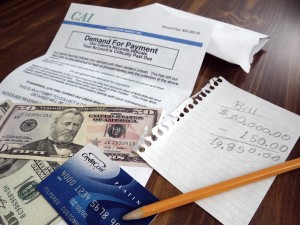By Michael J. Riedl
Consumer lenders across America breathed an initial sigh of relief on February 8, as the Northern District of California sided with the Office of the Comptroller of the Currency (the “OCC”) and the Federal Deposit Insurance Corporation (the “FDIC”) in upholding the “valid-when-made” rule pertaining to high-interest consumer loans.[1] By upholding this rule, the district court provided certainty in the first high-level challenge to the OCC and FDIC’s rules that were promulgated on June 2, 2020, and July 18, 2020, respectively.[2] In a nutshell, the rules reaffirmed the allegedly long-standing—though recently in considerable uncertainty—authority for secondary market participants to purchase loans or loan obligations, and collect on the debt at the same interest rate as that of the original bank lender.[3] In fact, such authority can be noticed in the Supreme Court as far back as 1833, when the Court held that as long as a loan was “in its inception, . . . unaffected by usury, [it] can never be invalidated by any subsequent usurious transaction.”[4]
While American banking law is complicated, irrational, inefficient, and “offends all of our aesthetic and logical instincts,” it largely works.[5] In 1978, the Supreme Court espoused a fundamental tenet of modern American banking law. In the landmark case of Marquette National Bank of Minneapolis v. First of Omaha Service Corp.,[6] the Court held that a nationally chartered bank may export the maximum allowable interest rate of its charter state to loans made in other states.[7] For example, a nationally chartered bank in Utah, where there is no statutory cap on interest rates,[8] could offer a loan to a citizen of New York at 50% APR, which is far more than the New York statutory maximum of 16%.[9] The Marquette decision caused large, nationally chartered banks to consider moving to states with high, or nonexistent, usury caps or to aggressively lobby their state legislatures to raise interest rates.[10] As a result, the nascent credit card and subprime lending boom continued to accelerate.
The development of a robust secondary market for loan obligations further enhanced the credit card and subprime lending boom. For example, an originating national bank could find willing buyers, in collection agencies, of nonperforming accounts and remove loans from their balance sheet by selling to secondary market participants who would bundle and securitize the loan obligations.[11] Implicit in the sale of the loans, was that the buyer-assignee—often times a nonbank entity—would be able to “step into the shoes” of the originating bank and collect on the debt obligation at the same interest rates as the originating bank, had they kept the loan. Such a principle is consistent with common law principles of assignment taught in first-year contract classes in American law schools.[12] However, considering that only nationally and state-chartered banks are allowed to export interest rates, when they assign or sell their loans to nonbank entities, can those entities collect on those obligations at the same interest rates as the national bank?
For the longest time, the answer to that question was a resounding yes. However, in 2015, the Second Circuit threw a wrench in the secondary market machinery. In Madden v. Midland Funding, LLC,[13] the Second Circuit held that when a nationally chartered bank sells loans to a nonbank entity, that nonbank entity cannot collect on the debt at a rate that would be usurious under state law.[14] The decision was immediately and widely panned.[15] Despite a bevy of amicus briefs and the invitation of the solicitor general to write a brief, the Supreme Court denied certiorari.[16] The uncertainty was immediate in the secondary loan market.[17]
For example, consider a $5,000 credit card loan to a consumer in New York that was originated by a nationally chartered bank in Utah. Because of the decision in Marquette, the Utah bank can charge whatever interest rate it would like on the debt, as Utah does not have a usury limit for contracting parties.[18] For purposes of the illustration, assume that the rate on past-due debt was 36%. After the debt went into charge-off, the Utah bank sold it to a debt collection agency in New York. Prior to Madden, both parties could be sure that the contractual interest rate, 36%, would be valid for the collection agency to pursue, and eventually seek a judgment on. However, after Madden, that would no longer be the case. The debt could only be collected at the statutory maximum of 16% in New York.[19] Thus, after Madden, debt held by collection agencies or in asset backed securities was, almost overnight, worth considerably less.
Initially, Congress tried to take legislative action to fix the “Madden problem,” with the House of Representatives passing a bill to ensure that the “valid-when-made” doctrine would become law.[20] However, the bill stalled in the Senate, which led the OCC and the FDIC to promulgate rules through notice and comment to ensure that if a loan was not usurious at the time it was made, and was thus “valid,” that loan did not become usurious through sale or assignment to a nonbank entity.[21] Within two months, California, Illinois, and New York filed suit for declaratory and injunctive relief against the new rules.[22] The plaintiff states first argued that the OCC rule would impermissibly allow the exportation of federal preemption of state law usury claims to secondary market participants. The states also argued that the OCC was trying to address the question as to whom the exportation doctrine applies.[23] If either of these were true, then the OCC or FDIC would have exceeded its authority under Chevron, U.S.A., Inc. v. National Resources Defense Council, Inc.[24]
However, the Northern District of California disagreed with the plaintiff states’ characterization, and held that the rule was addressing the question of whether a national bank must alter the contractually set interest rate of a loan it originated when selling it on the secondary market to a nonbank entity.[25] Since the controlling statute, 12 U.S.C. § 85, did not speak directly to the issue, the OCC had the authority to promulgate the rule under Chevron.[26] Moving on to the second question under a Chevron analysis, whether the OCC’s interpretation of 12 U.S.C. § 85 was manifestly unreasonable, the district court held that it was not.[27] Rejecting testimony from a leading scholar on the issue, Professor Adam Levitin, that the “valid-when-made” principle is a modern invention, the court relied on basic contract law to justify its holding: that an assignee steps into the shoes of an assignor.[28] Thus, Michael J. Hsu, the Acting Comptroller of the Currency, stated after the ruling, the “legal certainty” in the ruling allows for “the interest permissible before the transfer [] to be permissible after the transfer.”[29]
[1] See Order Resolving Cross-Motions for Summary Judgment, California v. OCC, No. 4:20-cv-05200-JSW (N.D. Cal. Feb. 8, 2022); Order Resolving Cross-Motions for Summary Judgment, California v. FDIC, No. 4:20-cv-5860-JSW (N.D. Cal. Feb. 8, 2022).
[2] Permissible Interest on Loans That Are Sold, Assigned, or Otherwise Transferred, 85 Fed. Reg. 33,530 (June 2, 2020); Federal Interest Rate Authority Rule, 85 Fed. Reg. 44,146 (July 22, 2020).
[3] See id.
[4] Nichols v. Fearson, 32 U.S. 103, 106 (1933).
[5] See John D. Hawke, Jr., Comptroller of the Currency, Remarks Before the Exchequer Club Washington, D.C., (Apr. 16, 2003), https://www.occ.gov/news-issuances/news-releases/2003/nr-occ-2003-30.html.
[6] 439 U.S. 299 (1978).
[7] Id. at 308.
[8] See infra note 18.
[9] N.Y. Banking Law § 14-a (McKinney 2014).
[10] See Charles R. Geisst, Beggar Thy Neighbor 221–23 (2013).
[11] See Michael Marvin, Interest Exportation and Preemption: Madden’s Impact on National Banks, the Secondary Credit Market, and P2P Lending, 116 Colum. L. Rev. 1807, 1837–40 (2016).
[12] See, e.g., Charles L. Knapp et al., Problems in Contract Law 1115–34 (9th ed. 2019); Restatement (Second) of Contracts § 317 (Am. L. Inst. 1981); 29 Williston on Contracts § 74:10, Assignment of contracts rights, generally (4th ed. 2021).
[13] 786 F.3d 246 (2015).
[14] Id. at 249.
[15] See Madden v. Midland Funding, LLC: Potentially Far Reaching Implications for Non-Bank Assignees of Bank-Originated Loans, Paul Hastings (June 11, 2015), https://www.paulhastings.com/insights/client-alerts/madden-v-midland-funding-llc-potentially-far-reaching-implications-for-non-bank-assignees-of-bank-originated-loans-updated-august-12-2015.
[16] 136 S. Ct. 2505 (2016).
[17] Outside of immediate uncertainty, the fact that secondary market participants may be less willing to purchase high-interest debt caused lenders in Second Circuit states to lend less in terms of average loan size and total number of loans. See Colleen Honigsberg et al., How Does Legal Enforceability Affect Consumer Lending? Evidence from a Natural Experiment, 60 J.L. & Econ. 673, 645 (2017).
[18] Utah Code Ann. § 15-1-1 (2019).
[19] N.Y. Banking Law § 14-a (McKinney 2014).
[20] Protecting Consumers’ Access to Credit Act of 2017, H.R. 3299, 115th Cong. (2018) (amending 12. U.S.C. § 85 to add “[a] loan that is valid when made as to its maximum rate of interest in accordance with this section shall remain valid with respect to such rate regardless of whether the loan is subsequently sold, assigned, or otherwise transferred to a third party, and may be enforced by such third party notwithstanding any State law to the contrary.”). For a more thorough discussion of the congressional attempts to codify the “valid-when-made” doctrine, see Abbye Atkinson, Rethinking Credit as Social Provision, 71 Stan. L. Rev. 1093, 1113–20 (2019).
[21] See supra note 2 and accompanying text. Specifically, the OCC’s rule, as codified in 12 C.F.R. § 7.4001(e) adds “[i]nterest on a loan that is permissible under 12 U.S.C. 85 shall not be affected by the sale, assignment, or other transfer of the loan.”
[22] See Complaint for Declaratory and Injunctive Relief, California v. OCC, No. 20-cv-5200 (N.D. Cal. July 29, 2020).
[23] See supra note 1, at 10–15.
[24] 467 U.S. 837 (1984).
[25] See supra note 1, at 12.
[26] Id. at 13. While this is what the district court held, it does not take many logical connectors. See also 12 U.S.C. § 85.
[27] See supra note 1, at 13.
[28] See supra note 1, at 15. Professor Levitin takes the view that the “valid-when-made” doctrine is not well established, but rather is a modern invention “fabricated by attorneys for financial services trade associations.” See Adam J. Levitin, Spurious Pedigree of the “Valid-When-Made” Doctrine, 71 Duke L.J. Online 87 (2022).
[29] Press Release, Office of the Comptroller of the Currency, Acting Comptroller Issues Statement on Court Decision Regarding ‘Madden Rule’ (Feb. 9, 2022) https://www.ots.treas.gov/news-issuances/news-releases/2022/nr-occ-2022-13.html.






